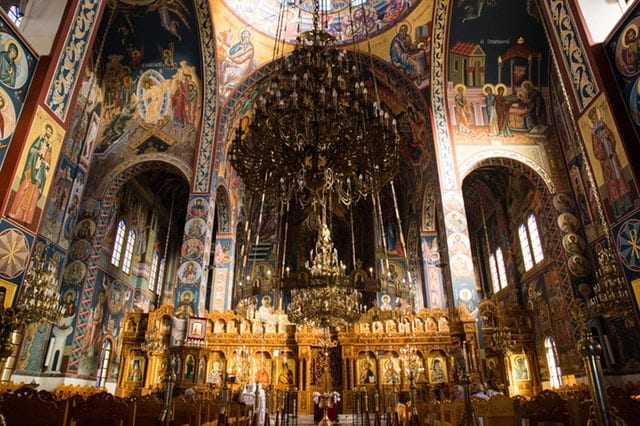


The exhibition of these illustrations take place within the Orthodox churches.

Through the Holy icons the events of the Divine Province which contributed to the salvation of man,are visible to the eyes of the believers. The iconography is therefore not just a kind of painting. The believer comes into direct contact with the reality of the saint,he can see him, embrace him with his lips, eyes, and soul. The picture though speechless, is talking. The goal of this sacred art is not a realistic representation, or the narration of events, so that they come to the minds of believers.
#ROBIN ARMSTRONG ORTHODOX ICONOGRAPHER PORTABLE#
Portable icons, mosaics, murals, are a readable book, through which the believer is sanctified and is directly related to the grace and the reality of the presented saints. The purpose of the Orthodox Church painting is not decoration. Iconography draws its themes from the Old and New Testaments, the lives of saints and its name is due to the fact that it represents the saints’figures and holy persons’ issues.īyzantine Iconography is mainly prosopographical, with the dominant form of Christ, who is head of the Church. Photios says that the art of iconography is inspired by God, that the artist's hand is moving from above and that the marvels achieved by iconographers of all times is the fruit of the Holy Spirit. The iconographer while working puts aside entirely his feelings and ideas.

In Orthodox iconography there is no room for personal inspiration or improvisation. Art obeys certain laws and principles which govern in all periods of its long course.įor the Orthodox Church, picture is the language of art expressing its dogmas, as well as speech. It is an art with its own artistic philosophy that remains stable and unchanged over time. Hagiography, from the Greek (ağios) "saint" and graphē ("writing"). The Greek iconographers, inheritors of an enormous cultural heritage,by staying loyal to the spirit of ecclesiastical tradition,are leading iconography to the new millennium, continuing its long journey through time. Today this sacred art, presents a huge development and Greece can say without any reservations that it is the metropolis of Orthodox iconography. His project will succeed and through him the iconography will be reborn. In the beginning of the 20th century, Fotis Kontoglou will attempt to retrieve from the dark abyss of oblivion the sacred art of the Orthodox iconography. The Byzantine icons will be replaced by religious paintings mixed with Byzantine and Renaissance elements. In the seventeenth century and for the next nearly four centuries it will lose its grounded, timeless and unchanging Byzantine style. Easy to use, less expensive than the mosaics - available only to higher social casts - fast in execution, adressing as a means of indoctrination to all walks of life, it will spread across the geographic range of the Byzantine Empire and in all countries of religious and cultural influence.ĭuring the Ottoman period the art of iconography is slowly beginning to decline. Iconography and all Byzantine art will reach its peak during the period of Palaeologus. After the first conquest of the city by the Franks in 1204, Thessaloniki will succeed Constantinople as an artistic center. Constantinople, apart from the capital of the new state,it will be for centuries the capital of art, not only in Byzantium but throughout Europe. But the main characteristics of Byzantine art, they begin to form during the middle Byzantine period (867 - 1204). It is believed that the first works of this form of art are the murals of the catacombs of Rome. Iconography as an art appeared when the Byzantine Empire was established in 330 AD.


 0 kommentar(er)
0 kommentar(er)
